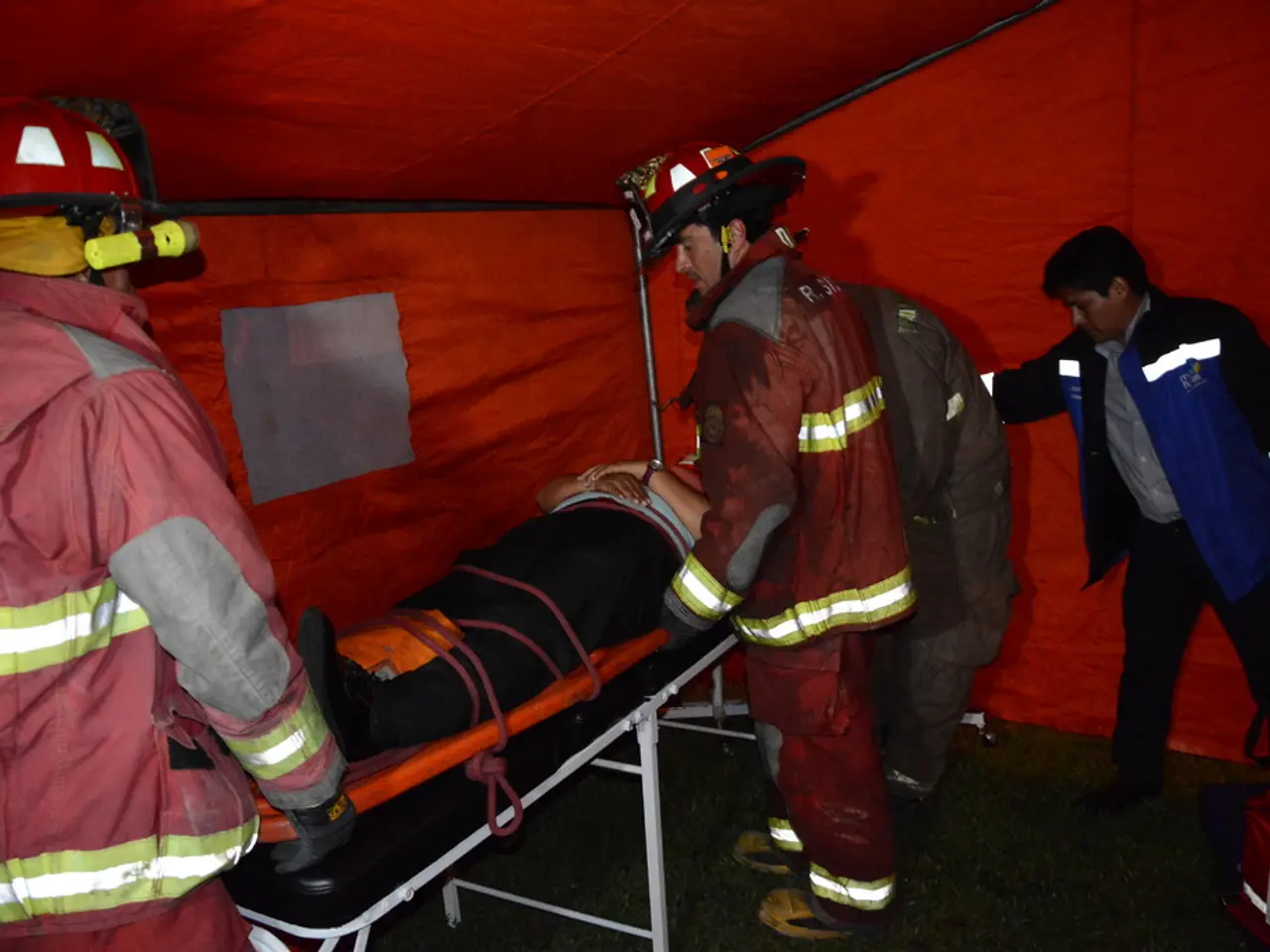Emergency care explained: a close look at first aid procedures
In the midst of a storm, the threat of lightning can be a cause for concern. Here's what you need to know about staying safe during lightning strikes, and how to help someone who has been struck.
According to Dr. Christoph Schmitz, the Bundesarzt (Federal Medical Officer) of the German Red Cross, if help is provided within the first five minutes, CPR has an 80% chance of success for a person who has gone into cardiac arrest after a lightning strike. This statistic underscores the importance of immediate action.
If you find yourself in a situation where a person has been struck by lightning, the procedure for helping them is known as "Check, Call, Compress". First, check for response. See if the person responds to voice and touch, and check for normal breathing. If there is no response and no breathing, call emergency services immediately. Then, begin chest compressions. These should be 5 to 6 centimeters deep, at a rate of 100 to 120 compressions per minute. Using the song "Stayin' Alive" by the Bee Gees can help maintain the correct pace.
It's a common misconception that touching a lightning victim poses an electric shock risk. In reality, the electricity has already discharged, so touching the victim is not dangerous. However, it's important to avoid moving the victim unnecessarily, as this could potentially cause further injury.
If you're sheltering in a hut or barn without a lightning rod, it's best to crouch in the center of the building to minimize the risk of the current jumping to your body. Similarly, if outdoors, crouch down in a low spot with feet close together, minimizing the path of the current through your body.
Lightning can cause severe injuries, burns, fractures, eye injuries, and blindness. In addition, it can disrupt the heart's rhythm and cause cardiac arrest. Despite these risks, the probability of being injured in a lightning strike is much lower than that of a traffic accident.
It's worth noting that many more people are affected by lightning strikes in practice than the official statistics suggest. This is likely due to the fact that many people who experience a near miss or minor shock do not seek medical attention.
In Germany, the average number of hospitalizations or medical treatments for injuries from lightning strikes is 110 per year, with an average of 4 deaths per year. The current flowing through the body during a lightning strike is mostly over the surface, rather than through the body itself.
In the aftermath of a lightning strike, the victim may experience muscle and nerve paralysis in the parts of the body through which the current flows. In some cases, the blood pressure can increase and remain increased for several months.
In summary, staying safe during a lightning storm involves minimizing your exposure and knowing how to help someone who has been struck. By following the "Check, Call, Compress" procedure and taking appropriate precautions, you can help ensure the safety of yourself and others.
Read also:
- Tough choices on August 13, 2025 for those born under Aquarius? Consider the advantages and disadvantages to gain guidance
- Perpetual Reason for Donning Sunglasses
- Criticisms levelled by a patient advocate towards MPK's judgement on PCR testing procedures
- Interpreting the Meanings Hidden in Your Nocturnal Visits: Understanding the Symbolism of Dreams Featuring Elephants








